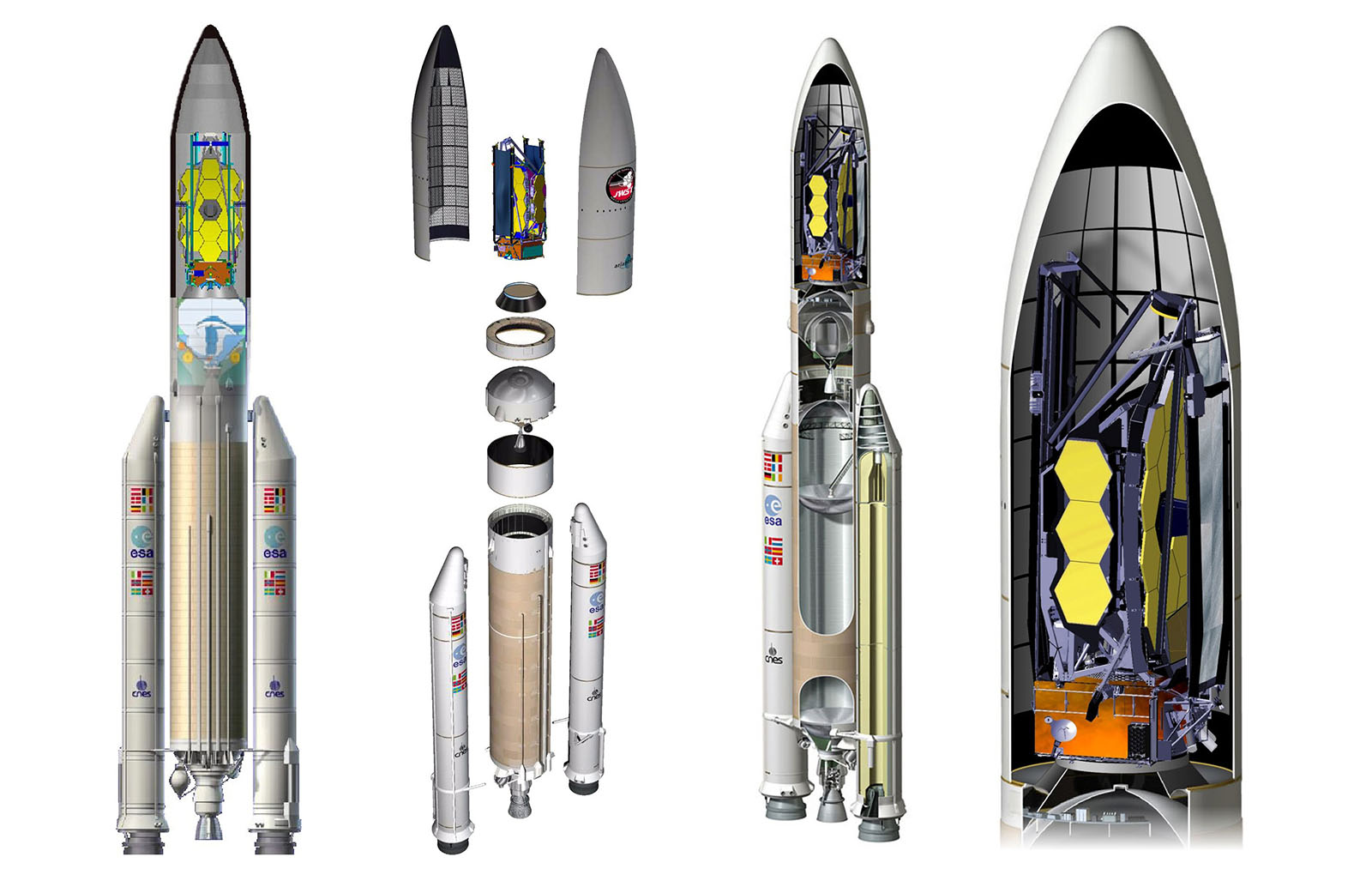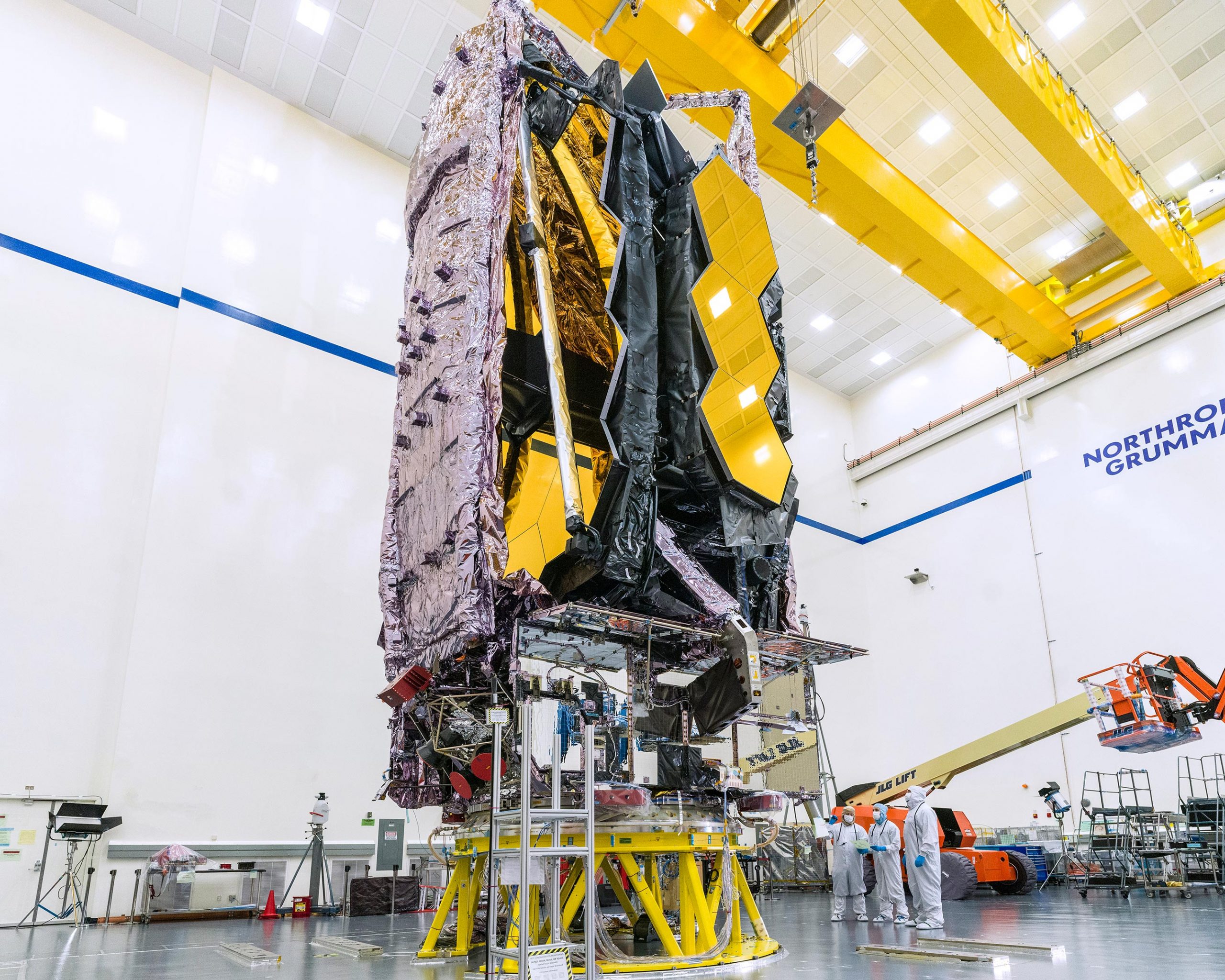

- JAMES WEBB TELESCOPE LAUNCH PATCH
- JAMES WEBB TELESCOPE LAUNCH FULL
- JAMES WEBB TELESCOPE LAUNCH SERIES
This is not an image, but “it’s still enormously exciting to astrophysicists”, Smethurst says. The Carina NebulaĪ transmission spectrum made from a single observation using Webb’s Near-Infrared Imager and Slitless Spectrograph (NIRISS) reveals atmospheric characteristics of the hot gas giant exoplanet WASP-96 b.

JAMES WEBB TELESCOPE LAUNCH FULL
Because they are distorted in the process, they show as the arcs streaking across the image: red objects are caked in cosmic dust – a crucial ingredient of star formation – while green ones are full of hydrocarbons. Better still, this cluster in the centre acts as a kind of magnifying lens for other galaxies which are much further away – as much as 13bn light years, almost back to the dawn of the universe. The fuzzy white dots below it are whole galaxies in the SMACS 0723 cluster, shown as they were 4.6bn years ago. In this image, the sharp, gleaming star at the centre is in our own galaxy.

Colouring the images like this makes it easier for scientists to detect areas for further study (and generates more public excitement than a black-and-white picture ever could). The different colours don’t denote literal shades, but the wavelengths of the signals, which tell us how hot the source was. Like all of the images produced by Webb, what you can see here is not visible light – but signals in the infrared spectrum captured by the satellite in monochrome, sent back to Earth as ones and zeros, and then reconstructed. “It suggests there’s no blank sky any more – everywhere you look, you’re going to find something in the background.”
JAMES WEBB TELESCOPE LAUNCH PATCH
“We can see things in this tiny, tiny patch in way more detail than we’ve ever been able to with Hubble ,” Smethurst said. The entire picture covers thousands of galaxies in an area of the sky equivalent to a single grain of rice held at arm’s length on the surface of the Earth. The first of the Webb images to be revealed – by Joe Biden – shows a galaxy cluster known as SMACS 0723. Take a sneak peek at this groundbreaking mission by checking out the clip below.Webb’s First Deep Field, which showcases a galaxy cluster called SMACS 0723 as it appeared 4.6bn years ago. It must precisely execute 50 major deployments, and there is no room for error. The fate of the JWST rests on its ability to successfully unfold, which is easier said than done. However, the mission won’t be without its own set of challenges. This next generation space telescope will serve astronomers and scientists from across the globe as the leading orbital observatory for the foreseeable future. Within the next four months, the JWST will perform equipment and systems checks.Īssuming all goes according to plan, the JWST should be fully operational and in use just six months after launch. Then, within one month after liftoff, the telescope will deploy, its scientific instruments will activate, and the JWST will enter orbit around L2. Within the first week following launch, the sunshield will deploy. According to NASA, the JWST will then undergo a mid-course correction on its way to L2. Shortly after launch, the JWST will deploy its solar array and a high gain antenna to establish communications. In just 29 days, the JWST will reach its destination and begin preparing for robust scientific discoveries. Instead, it will orbit the Sun at the second Lagrange point, also known as L2. Unlike Hubble, the JWST will not orbit the Earth. It’s got the largest primary mirror of any space telescope (much larger than Hubble’s), and is equipped with the latest and greatest instruments to help scientists unlock the secrets of the cosmos. It’s a feat of engineering, a true modern marvel with unparalleled tech. This revolutionary mission will help scientists learn about how our universe and solar system formed. The highly anticipated launch of the JWST is fast approaching.

Destination: The second Lagrange point (L2).Launch site: Europe’s Spaceport, French Guiana.It’s the most powerful space telescope ever built, and it will travel approximately one million miles to shed light on how the universe formed and how our solar system has evolved. The James Webb Space Telescope (JWST) is set to launch later this month.
JAMES WEBB TELESCOPE LAUNCH SERIES
Each month, in our Launch Pad series we cover notable spaceflight missions set to lift off soon.


 0 kommentar(er)
0 kommentar(er)
